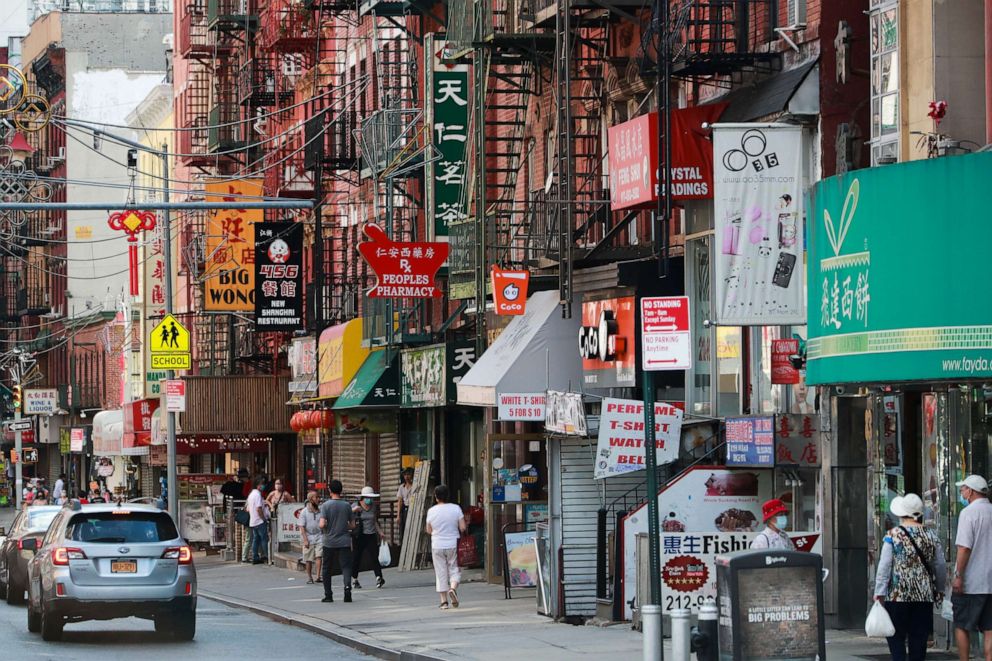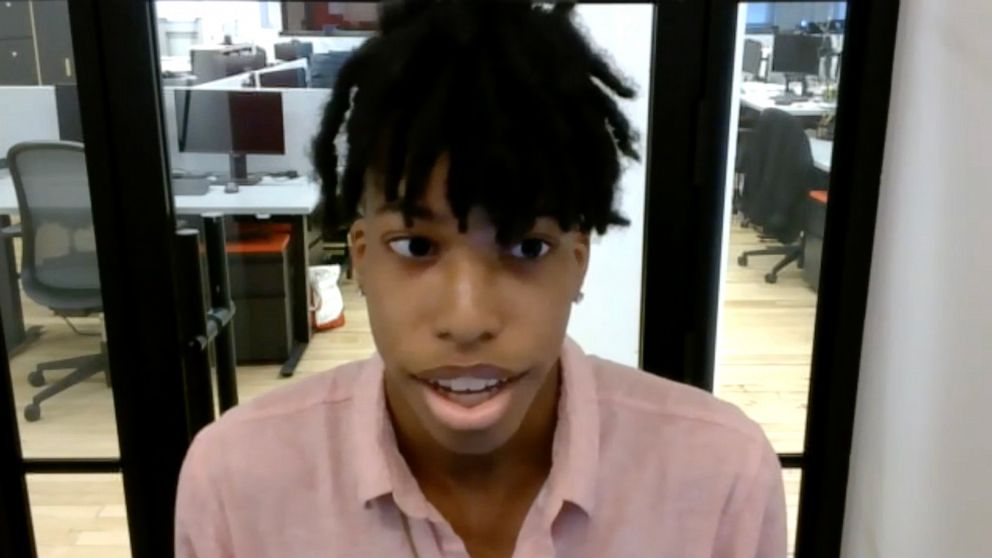What to know about suit challenging alleged 'racist' education system in NYC
A wide-ranging lawsuit claims New York City's education system is racist in design and operation — effectively separating largely white and Asian students from Black and Latino students through a discriminatory testing processes for its gifted and talented (G&T) programs and curriculum.
Unlike other lawsuits that have demanded equal access to education, IntegrateNYC v. The State of New York, filed by students and advocates against the state and city, along with other defendants, takes the debate a step further.
"It's a wholesale attack on racial inequality at school," said Derek Black, a professor of education and constitutional law at the University of South Carolina School of Law who filed multiple amicus briefs on the issue of school segregation. Other cases such as Cruz-Guzman v. State of Minnesota have demanded desegregation of schools for the purposes of better learning and equal opportunity but "this case is far more aggressive," Black said.
The suit, originally filed in March, argues that New York City has perpetuated racism by upholding racially discriminatory screening processes for gifted programs that begins early in children's lives as well as admission to elite schools. It also claims city schools, which remain some of the most segregated in the country, teach a Eurocentric curriculum and fail to sustain a racially diverse educator workforce.
The suit seeks to bar the use of what the plaintiffs call a discriminatory entrance exam into gifted programs and ensure recruitment of a diverse workforce. Use of the exam was suspended this year because of a contract issue.
The action has generated controversy, specifically from some members of the Asian community, who argue that by being grouped with white people as being overrepresented in the city's G&T programs and specialized schools unfairly suggests that they are privileged when many are in fact impoverished.
A spokesperson for the New York City Department of Education said in a statement that the agency was reviewing the suit and that "the administration has taken bold, unprecedented steps to advance equity in our admissions policies — suspending academic screens in middle schools, removing district priorities in high schools, and dismantling a system that uses the test results of four year olds to determine their academic success." The mayor's office did not respond to ABC News' request for comment.
Here's what to know ahead of the next court date on Sept. 30:
How it all started
When former Mayor Michael Bloomberg took control of the public school system in 2002, admission to the highly competitive G&T programs was centralized through standardized testing for children starting at age 4.
Though the intention was to diversify the racial makeup of the programs and eliminate bias against minority students, the result was the opposite: fewer and fewer Black and Hispanic students were admitted to gifted programs at a younger age which hindered them from being prepared for the entrance exam to the city's specialized high schools, according to the complaint.
During the 1994-95 school year, the largest racial group at Brooklyn Technical High School, one of the eight elite specialized high schools in the city, was Black, comprising 37% of the total student population. In 2021, Black students made up less than 6% of the school's population, according to state enrollment data.
According to the suit, white and Asian students were disproportionately offered admission to G&T programs (representing 35% of the kindergarten population but 81% of G&T offers for that grade in 2017-18) compared to Black and Latino students (representing 65% of the population but 18% of offers).

Before Bloomberg enacted mayoral control, the procedure for identifying gifted students varied between schools, which could choose to utilize a combination of multiple identification methods including grades, teacher referrals and parent referrals.
Chien Kwok, the co-founder of PLACE NYC — a parent-led organization advocating for expanding access to G&T programs — and a recently elected member of the Community Education Council of District 2, said the old system yielded a more diverse student population.
Under the Bloomberg-imposed testing system, the duty of identifying gifted students fell to parents, who had to opt for their children to test for an extremely limited spot in the G&T programs. Some parents could not easily navigate the complex path to G&T testing either because of time constraints or financial restraints, according to Kwok, who attended New York City schools in the 1980s and attended Brooklyn Tech.
"(Centralizing) made it hard for families with parents working two jobs ... to go through a very onerous process," said Kwok.
The Department of Education announced in February 2021 that the city would temporarily eliminate the use of a single test into gifted programs and instead revert to lottery and teacher referrals – a process that the lawsuit contends does not address the existing segregation and is not "pedagogically sound."
Teachers, like others in society, may hold racialized and gendered perceptions of students, and those perceptions affect whether they think a student might be gifted or not, said Rachel Fish, a professor at New York University studying racialized constructions of disability and giftedness.
Her research, in which she had teachers read vignettes about fictional students demonstrating academic giftedness, found that teachers are more likely to perceive white students' academic strengths as natural and conversely fail to recognize the same level of objective academic ability in students of color.
'Caste system'
Claude Hibbert, a 17-year-old rising senior at Brooklyn Tech and one of the student plaintiffs, said as a Black student, racist and racially charged expressions such as the "n-word," "fried chicken" and "Kool Aid" were frequently cast at him by other students. When he sought guidance from teachers, he said he would be told to just "push through," or "that's just the way it is."
"You're being harmed and you're going to somebody for help and having your experience invalidated," Hibbert told ABC News.
According to the suit, a teacher at Hibbert's school kept a list of racist incidents reported by Black and Latino students between 2012 and 2015, including racially charged jokes and perpetuating stereotypes. The teacher reported the incidents to school leadership, but "the school enacted no meaningful policy changes," the complaint says, and the documents say that the system leaves the students to fend for themselves.
The racism that students of color say they experienced in school is part of a system that they say is racist itself, the lawsuit alleges.
"The system reproduced by the New York City public schools is fundamentally one of caste: an artificial, graded 'ranking of human value that sets the presumed supremacy of one group against the presumed inferiority of other groups on the basis of,' in the United States, race," the suit says.

This system, the complaint says, is accomplished by effectively setting groups apart at an early age and perpetuating those divisions.
"Consequently, the demographics of the City's G&T programs reflect disparate familial resources, enrolling predominantly white and certain Asian students," the suit says. The system culminates in admissions to specialized high schools, which it says cements the notion that certain groups are privileged while others are not.
"The City and State intentionally maintain and sanction this system despite their knowledge — acquired through decades of experience and reflected in their own admissions — of its racist character and outcomes," the complaint says.
Privilege a complex issue
One of the more nuanced concepts advanced in the suit is that of privilege — and Asian students being lumped in with white students as being predominantly represented in gifted programs. The complaint acknowledges that both the city and state treat Asians as a monolith and that "this treatment obscures severe economic stratification and diverse English language acquisition needs within Asian American and Pacific Islander communities."
The fact that Asian Americans, who had the second highest poverty rate in the city, according to the city's most recent poverty measure report in 2018, have high representation in gifted programs is not because they are all privileged, Kwok said.
A Chinese mother of three in New York City, who requested anonymity due to fear of retribution from her neighbors, told ABC News that as the sole breadwinner of her family, she struggles to finance her children's education.
"All the money I make, I just save for my children's education," she said. She lives in government housing, works as a part-time home care aide and said she used her earnings for her children's Specialized High School Admissions Test preparation courses. Her youngest son is currently a student at Stuyvesant High School in Manhattan, one of the city's eight specialized high schools.
At Stuyvesant, more than half of Asian students were eligible for free and reduced-price meals in 2020, which is what the DOE uses as a poverty indicator. In comparison, 45% of Black students, 29% of Hispanic students and 16% of white students qualified.
Mark Rosenbaum, the plaintiffs' attorney from Public Counsel, a pro bono public interest law firm, said that rather than being divisive, the suit is about achieving equality for all students.
"If there are to be gifted and talented programs, and if there are to be specialized high schools, they have to be accessible to all. ... They must be retained in a way that all children, regardless of their race, have equal access to these schools," Rosenbaum said.
Editor's note: This story has been corrected to note that in Rachel Fish’s research she had teachers read vignettes about fictional students. She did not have them view films of students.




